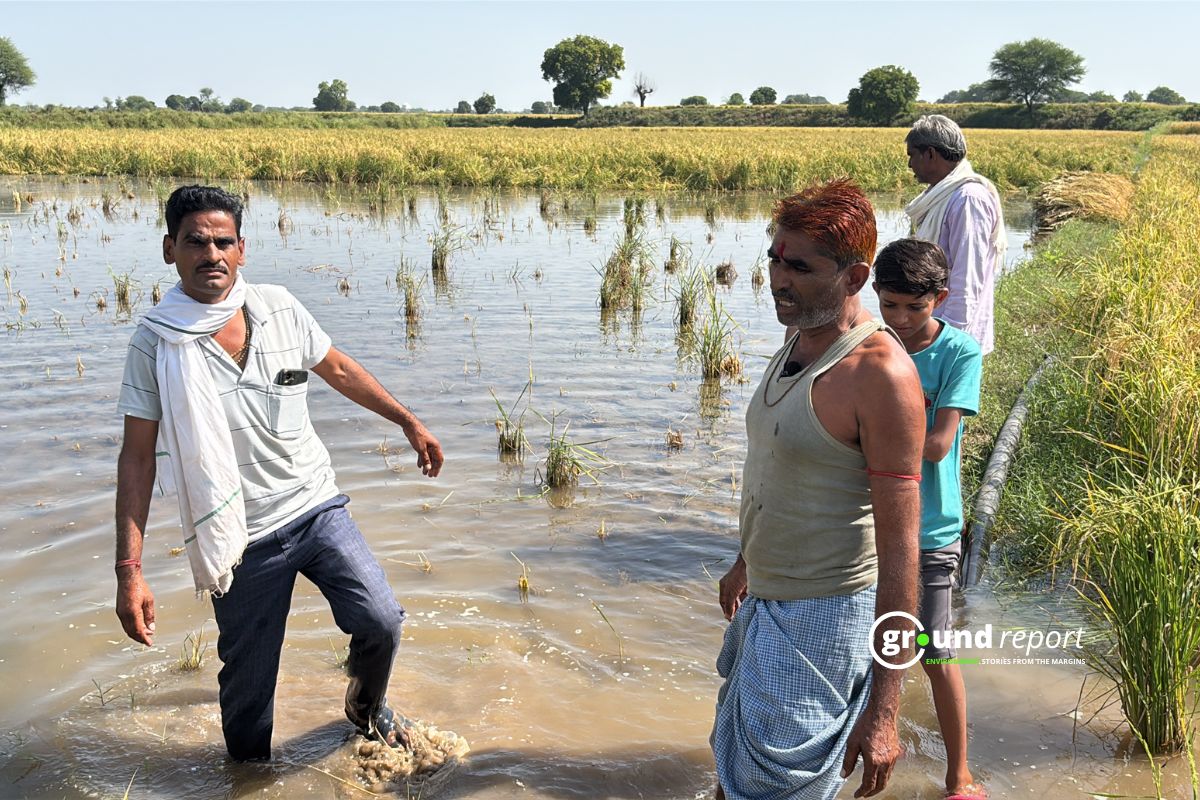A recent study led by scientists from the Indian Council of Agricultural Research (ICAR) suggests that the rice and wheat Indians are eating today might have low nutritional value.
“For the past 50 years, India has been introducing high-yielding rice and wheat varieties at breakneck speed to achieve food security. The ICAR-led study has examined the food value of these modern grains and reports that breeding programmes focused on developing high-yielding varieties have altered the nutrient profiles of rice and wheat — to the extent that their dietary and nutritional value has gone down,” says the magazine.
The study has gone ahead to assess the health impact of this “historical shift” in nutrient profiles of rice and wheat, and warns that the impoverished staple grains could worsen the country’s growing burden of non-communicable diseases (NCDs).
Down To Earth and the Centre for Science and Environment (CSE, which publishes the magazine) organised a webinar here today to discuss how the magazine covered the new study.
The panel included Sovan Debnath, the Soil Scientist from ICAR-Central Agroforestry Research Institute, Jhansi and the lead author of the study, Biswapati Mandal, former Professor from Directorate of Research, Bidhan Chandra Krishi Viswavidyalaya, Kalyani and the co-author of the study, Ishi Khosla, a Clinical Nutritionist, Consultant and Writer, and Shagun, a Senior Correspondent from Down To Earth.
High-yielding crops decrease India’s nutritional value
When the Green Revolution began in India, it aimed to feed the rapidly growing population and become self-sufficient in food production. Therefore, agricultural scientists mainly motivated to improve the yield.
Speaking at the webinar, Dr Mandal said: “After the 1980s, the focus of breeders shifted to developing varieties that were resistant to pests and diseases and tolerant to stresses such as salinity, moisture and drought. They did not have the luxury of thinking whether the plants were taking in nutrients from the soil or not. Hence, over some time, what we are seeing is that plants have lost their capacity to take up nutrients from the soil.”
Scientists from ICAR and Bidhan Chandra Krishi Viswavidyalaya conducted a study in 2021, which the 2023 study extends. The study investigated the reasons for zinc and iron deficiency in populations dependent on a cereal diet. When tested, the high-yielding cultivars of rice and wheat revealed a downward trend in zinc and iron grain density.
Says Debnath, who was one of the scientists behind the 2021 study as well: “Our experiments showed that modern-bred cultivars of rice and wheat are less efficient in sequestering nutrients like zinc and iron, despite their availability in soil.”
Green Revolution impacts global nutritional security
A 2021 study revealed that the rise in zinc and iron deficiency in the global population over the past four decades has coincided with the worldwide spread of high-yielding cereal varieties introduced after the Green Revolution.
According to a report by Down To Earth, the concentration of vital nutrients like zinc and iron has dropped by 33% and 27% in rice, and by 30% and 19% in wheat, respectively, over the past 50 years.
Alarmingly, the concentration of arsenic, a poisonous element, in rice has surged by 1,493%. The report states that our staple grains are not only less nutritious but also harmful to health. Due to continuous genetic modifications in modern breeding programs, plants have also lost their natural evolutionary defenses against toxins.
Essential nutrient loss in staple grains could heighten disease prevalence in neurological, reproductive, and musculoskeletal systems. Down To Earth’s Shagun stated in a webinar that Green Revolution’s agricultural practices, often criticized for environmental effects, are rarely discussed beyond soil degradation, water pollution, groundwater depletion, and mono-cropping. This study focuses on the Green Revolution’s impact on India’s nutritional security.
Efforts are under way in the country to enhance foodgrain nutrition via landraces and wild species. Under the Union government’s bio-fortification project, ICAR scientists and others are exploring germplasm for high-nutrition donor varieties. So far, they’ve developed 142 bio-fortified varieties, but these are yet to gain wide acceptance among farmers, says Shagun.
“Scientists Down To Earth say that bio-fortification of other essential elements like manganese, copper, and calcium will take some time because breeding and releasing any variety is a long and arduous task. Shagun says, “Rice and wheat are staple foods for the majority of India’s population. The significance of our report lies in the context of the health impacts that impoverished grains can lead to.”
Support us to keep independent environmental journalism alive in India.
Keep Reading
What is Green Hydrogen? Could it change energy in South Asia?
Blue hydrogen is worst for climate: study
How Increasing space traffic threatens ozone layer?
Hydro Fuel Market: India’s current scenario and the future ahead
Natural Gas is a Misleading term, It is not Natural and clean at all
Follow Ground Report on X, Instagram and Facebook for environmental and underreported stories from the margins. Give us feedback on our email id greport2018@gmail.com.
Don’t forget to Subscribe to our weekly newsletter, Join our community on WhatsApp, and Follow our YouTube Channel for video stories.









